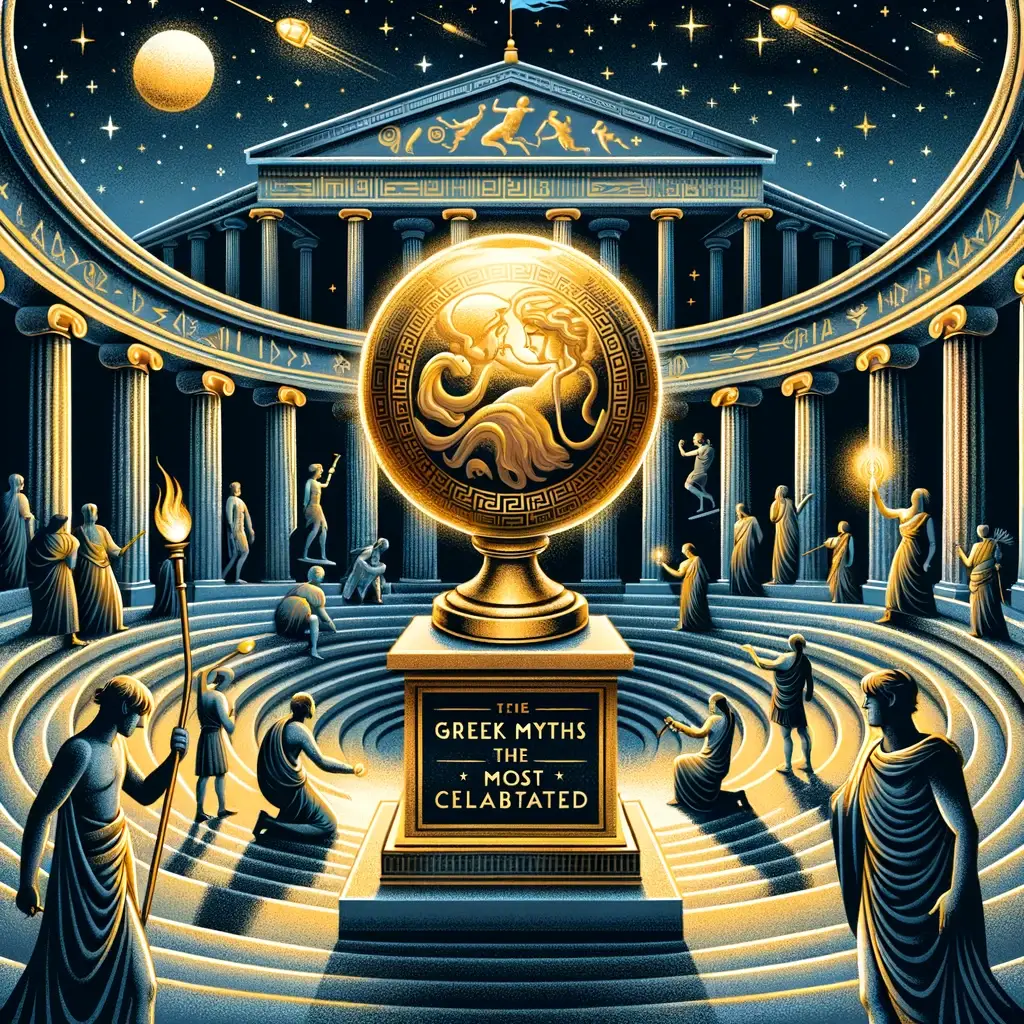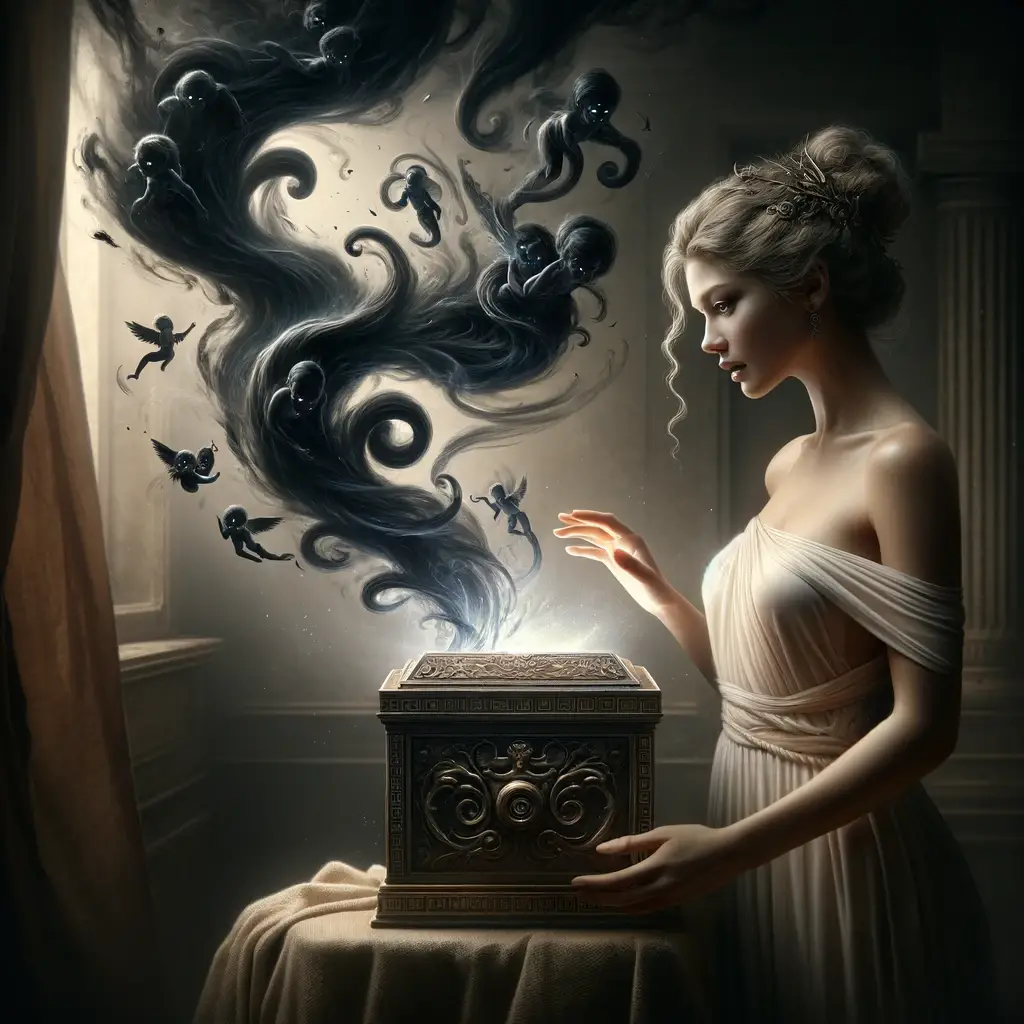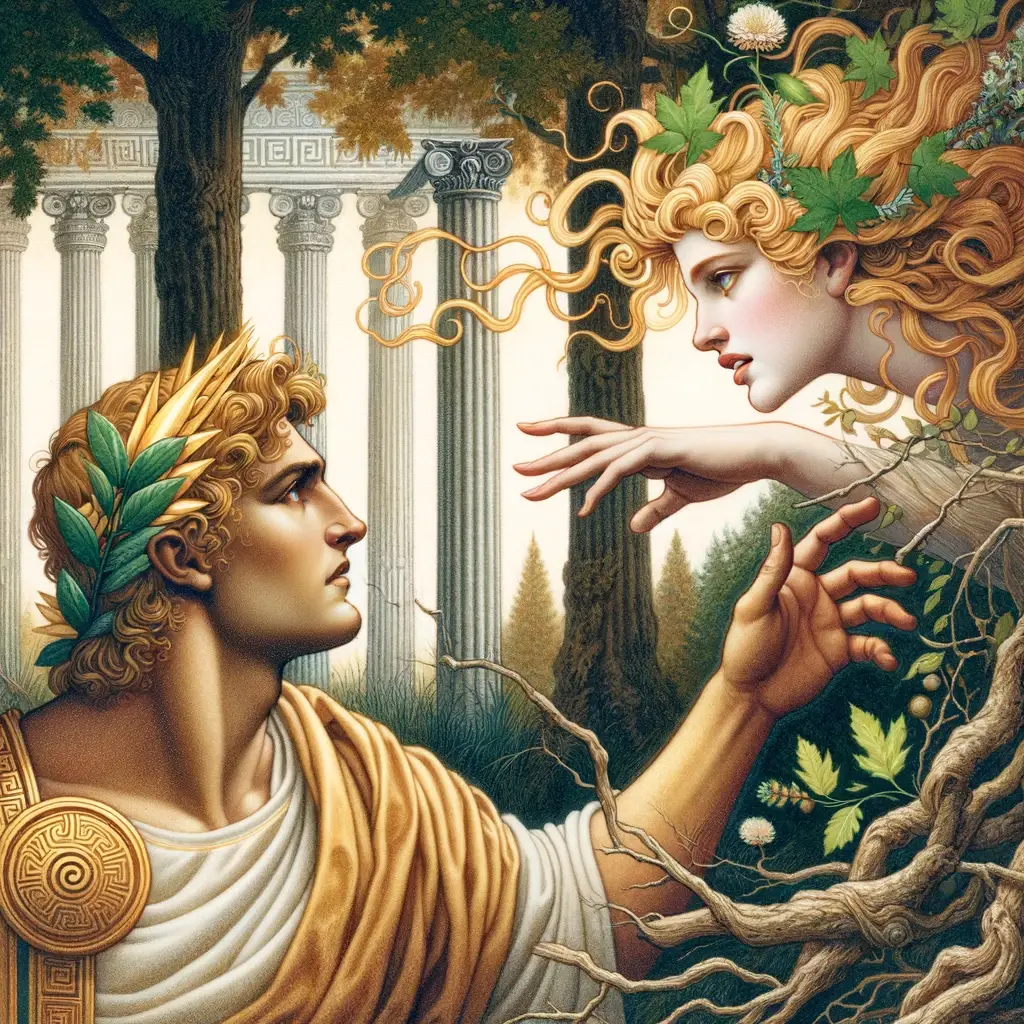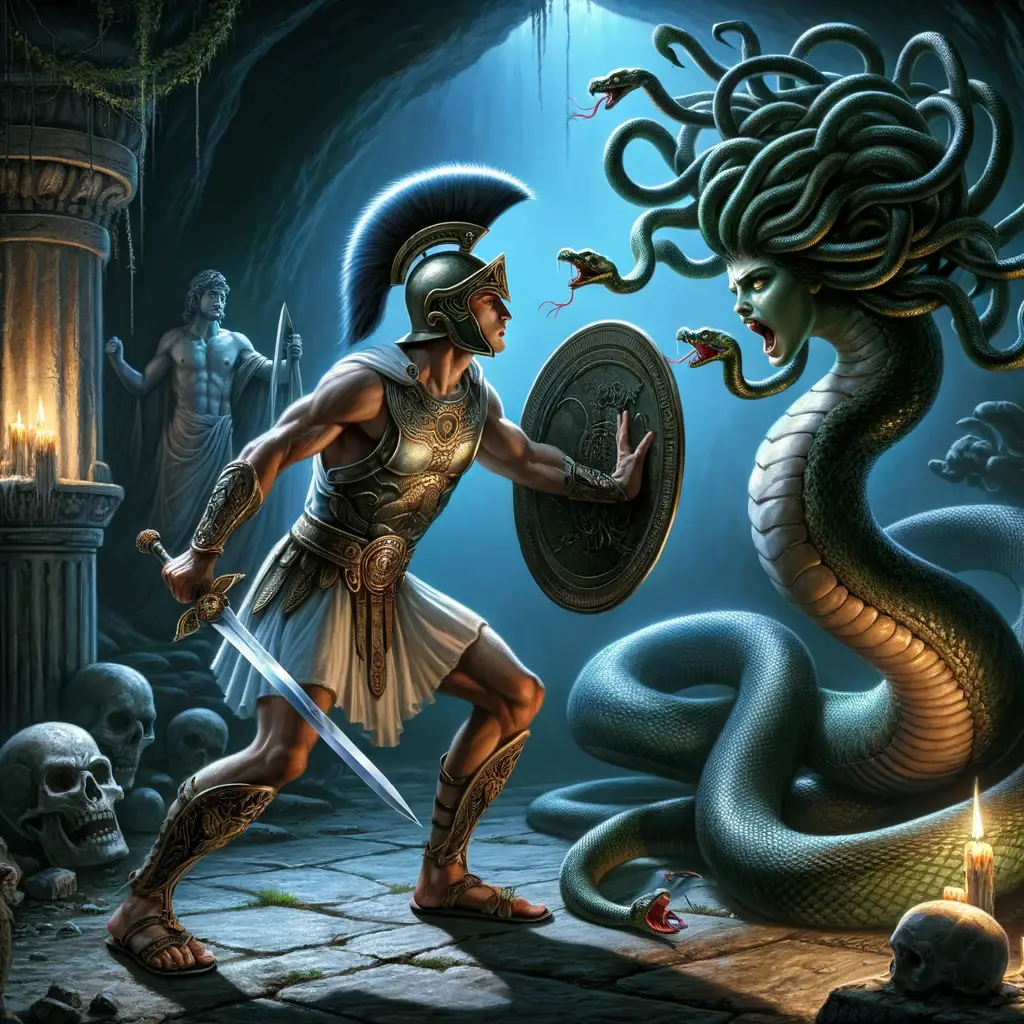In ancient Greece, the term “mythos” referred to sacred narratives that explained the origin of things and why certain natural phenomena occurred. Greek myths emerged from humanity’s need to ponder essential questions when philosophy and science were not yet accessible to all, so people turned to religion (a classic example being a man witnessing lightning strike a tree and interpreting it as a sign of Zeus’ anger).
Over time, Greek myths transitioned from their original purpose and evolved into actual stories, even becoming literary material. Authors like Homer, Apollonius of Rhodes, Plato, and others would not be the same without referencing Greek myths.
In collaboration with the Italian newspaper Eroica Fenice, we present a review of some famous Greek myths. We won’t merely analyze their meaning but also explore how they influenced various fields of knowledge and inspired artists throughout the ages.
Table of Contents
Greek Myths: The Most Celebrated

The Haunting Tale of Self-Love: Narcissus and the Echo
One of the most famous Greek myths (or Miti greci, in Italian) is that of Narcissus, as recounted by Ovid in Metamorphoses. Narcissus, a hunter of divine lineage (son of the river god Cephissus and the nymph Liriope), displayed a disdainful and indifferent attitude toward love. In the Greek version of the myth by the grammarian Conon, Narcissus attracted the attention of many suitors to the point that Ameinias, one of them, became so infatuated with him that he accepted Narcissus’ sword and killed himself with it.
In Ovid’s Metamorphoses, it is the nymph Echo who falls in love with the youth. However, when Narcissus rejects her, Echo retreats to a mountaintop and withers away, leaving only her voice. Nemesis, the goddess of justice, took pity on the young girl and decided to punish Narcissus. While stopping by a spring to drink, he saw the beautiful reflection of a mysterious boy and fell in love. Realizing that it was himself and that he could never possess himself, he began to pine away and eventually perished.
This myth has significantly impacted various art forms, notably in Oscar Wilde’s “The Picture of Dorian Gray.” Moreover, it has contributed significantly to the language field, with “Echo” becoming a scientific term for the reflection of sound and “narcissistic” stemming from Narcissus, signifying a person dedicated to self-admiration and indifference to others.
Prometheus: The Titan Who Braved Zeus’s Wrath for Humanity
Among the Greek myths of creation, Prometheus stands out. He was one of the many Titans who sided with Zeus in the battle against his father, Cronus. After becoming the ruler of the universe, Zeus allowed Prometheus free access to Mount Olympus. However, Prometheus felt increasingly connected to the suffering of humanity, who lived in hardship.
Prometheus inadvertently caused this suffering when, by deceit, he gave the best parts of a sacrificed bull to humans and tricked the gods by offering them the bones covered in fat. In response, Zeus took away fire from humans. In an act of generosity, Prometheus stole a spark of the sun’s fire from the god Helios (in other versions, he stole a torch from Hephaestus) and gifted it to humans. Upon discovering this affront, Zeus brutally punished Prometheus. He had him bound to a column, where an eagle would daily tear out his regenerating liver. Years later, Heracles would free Prometheus by killing the eagle with a poisoned arrow.
Prometheus’s story strikes a chord among all Greek myths for several reasons. It can be read metaphorically as a struggle of humanity against authority and as a philosophical and moral journey of humans seeking to break free from the fears imposed by religion (even though Prometheus himself was immortal). In art, this myth inspired works like Euripides’ “Prometheus Bound” and “Prometheus Unbound.” Notably, Mary Shelley’s 1818 novel “Frankenstein,” subtitled “The Modern Prometheus,” draws parallels with this myth. Like Prometheus, Dr. Victor Frankenstein uses fire (in this case, from lightning) to give life to a creature, but the act is driven by personal vanity rather than altruism toward humanity.
Pandora’s Dilemma: The Box That Unleashed Humanity’s Trials

Closely related to the myth of Prometheus is the story of Pandora, which resembles the biblical tale of Adam and Eve in the Book of Genesis. After punishing Prometheus, Zeus ordered Hephaestus, the god of fire and blacksmithing, to create a woman endowed with beauty and all virtues. This woman was named Pandora and was sent to Epimetheus, Prometheus’s brother. Although warned not to accept any gifts from the gods, Epimetheus fell in love with Pandora, and they had a daughter named Pyrrha.
Pandora was given a box by Zeus with strict instructions never to open it, as it contained all the world’s evils. Driven by curiosity, a quality Hermes gave her, Pandora opened the box, unleashing suffering, old age, jealousy, illness, and many other evils upon humanity. The time when humans were eternally young, happy, and carefree like the gods ended. However, hope remained inside the box, and when Pandora reopened the lid, she allowed hope to spread among humanity.
In everyday language, you may hear or read the expression “Pandora’s box,” signifying a situation where problems become so evident that they can no longer be hidden. It is indeed one of the most intriguing Greek myths.
Greek Myths: The Twelve Labors of Heracles
Who isn’t familiar with the legendary feats of Heracles, better known as Hercules in Roman mythology? According to the myth, Heracles was born to the mortal Alcmena and Zeus, who had assumed the form of her husband, Amphitryon, due to another of Zeus’s infidelities, Hera, the goddess of the household, placed a serpent in the cradle of the infant Heracles to kill him. However, Heracles strangled the serpent, displaying his superhuman strength.
Trained in warfare and the use of weapons, Heracles, in his adulthood, murdered the sons of Eurystheus. To atone for this crime and to ensure his immortality, Heracles had to complete the “Twelve Labors.” Among the most famous of these labors are the slaying of the Nemean lion, the Hydra of Lerna, the cleaning of the Augean stables, the theft of the golden apples from the Garden of the Hesperides, and the capture of Cerberus, the three-headed dog, from the Underworld.
Despite his immortality, Heracles met a “natural” death. The centaur Nessus lusted after Heracles’ wife, Deianira, and attempted to rape her. Heracles killed Nessus, but the centaur convinced Deianira to collect his blood, which he claimed was a love potion. When Deianira later used the tainted blood on Heracles, it caused him immense pain, prompting him to build a funeral pyre and set himself on fire. Zeus eventually took Heracles’ soul to Olympus and led him to the goddess Hebe.
The myth of Heracles gave rise to the seminal archetype of the invincible, superhuman, strong man. Even in ancient Greece, Euripides wrote the plays “Heracles” and “The Madness of Heracles.” In more recent history, Gabriele d’Annunzio contributed to the character by co-writing the script for the 1914 film “Cabiria,” creating the character of the giant Maciste. Some well-known incarnations of the hero include Disney’s “Hercules” and the TV series “Hercules: The Legendary Journeys.” The incredible strength of characters like Hulk, Superman, and many other superheroes undoubtedly owes much to the famous semi-divine hero.
Apollo and Daphne

In Greek myths, another recurring theme is, of course, that of love, exemplified in the story of the god of music and poetry, Apollo, and the nymph Daphne.
Apollo had just killed the serpent Python and, victorious, encountered the god of love, Eros. Apollo teased Eros, claiming that a young boy like him couldn’t handle a weapon like his bow. Eros took revenge by striking Apollo with one of his arrows, causing the god to fall in love with Daphne. However, the god of love also shot Daphne with a lead-tipped arrow, rendering her immune to love.
Apollo pursued Daphne relentlessly, and she attempted to escape his advances but failed. She called upon Gaia, the personification of the earth, for help. Gaia transformed Daphne into a laurel tree just as Apollo was about to embrace her.
Among Greek myths, the story of Apollo and Daphne represents an allegory of impossible and unattainable love. It also offers essential iconographic symbolism. Think of Gian Lorenzo Bernini’s famous sculpture, “Apollo and Daphne,” and the symbolic significance of the laurel plant. Originally a symbol of the god of poetry, it became a poetic emblem with Petrarch, who was crowned the “poet laureate” on the Capitoline Hill in 1341 by Robert of Anjou. The tradition of placing laurel wreaths on the heads of newly graduated students, symbolizing wisdom and maturity, cannot be overlooked.
Other Greek Myths: Jason and the Argonauts
The myth of Jason and the Argonauts tells the story of Jason, a Greek hero who, along with a group of warriors known as the Argonauts, embarked on a quest to find the Golden Fleece, a legendary treasure located in Colchis on the coast of the Black Sea.
Jason was the son of the King of Iolchus, Aeson, but Aeson had been overthrown by his brother Pelias, who promised to return the throne to Jason only if he could retrieve the Golden Fleece. Jason accepted the challenge and set out in search of the treasure, accompanied by legendary warriors like Heracles, Atalanta, and Peleus.
During their journey, Jason and the Argonauts faced numerous challenges, including the sea monster Scylla, the dragon guarding the Golden Fleece, and Colchis’ King Aeetes, who was reluctant to part with the treasure. Through cunning and courage, Jason succeeded in his mission and returned to Iolchus with the Golden Fleece, ultimately regaining his throne.
The Myth of Perseus and Medusa

The myth of Perseus and Medusa recounts the story of Perseus, a Greek hero tasked by King Polydectes of Seriphus with the mission of killing Medusa, a monstrous creature with snakes for hair that could turn anyone who gazed upon her into stone.
Perseus embarked on his journey with the aid of the goddess Athena and the god Hermes, who provided him with magical items to aid in his quest. These included a reflective shield to avoid Medusa’s gaze, winged sandals for flight, and a sword to decapitate her.
Perseus found Medusa in her lair, a cavern shared with her sisters, the Gorgons. Using Athena’s shield, he beheaded Medusa without turning to stone. Perseus’s heroic feat was completed, and he returned home with the Gorgon’s severed head.
The Myth of Myrrha and Cyparissus
The myth of Myrrha and Cyparissus is a story from Greek mythology that tells of the transformation of Myrrha, a young woman, into a myrrh tree.
According to the myth, Myrrha was a beautiful and virtuous maiden who loved nature and flowers. One day, the god Apollo spotted her walking in the fields and was captivated by her beauty. He approached her and attempted to seduce her, but Myrrha rejected his advances. Offended, Apollo turned her into a myrrh tree, with evergreen leaves and fragrant flowers.
Later, the god Dionysus, who had been in a relationship with Myrrha, found her transformed into a myrrh tree and, filled with grief, wept tears of wine onto her. These wine tears enriched the fragrance of the myrrh tree.
The myth of Myrrha and Cyparissus has often been interpreted as a metaphor for the transformation of physical beauty into spiritual beauty or as a symbol of a woman’s strength in resisting male seduction. Myrrh, with its intense fragrance, has also become a symbol of mourning and commemoration and is frequently used in funeral rituals.
These are just a few of the rich and enduring Greek myths that have left a lasting impact on literature, art, and the human psyche. The ancient stories continue to inspire and captivate us, offering timeless insights into the human experience.
FAQs On These Greek Myths
What is the significance of the Narcissus myth in modern culture?

The Narcissus myth has profoundly influenced art and language, contributing the term ‘narcissistic’ to describe self-admiration and the concept of an ‘echo’ in science. The story has also inspired literary works such as Oscar Wilde’s “The Picture of Dorian Gray.”
How does the myth of Prometheus reflect on human nature and society?
Prometheus’ story symbolizes the human struggle against authority and the quest for knowledge and enlightenment. It has inspired philosophical discourse and artworks, including Mary Shelley’s “Frankenstein,” which parallels Prometheus giving fire to humanity.
What does Pandora’s box represent, and how does it relate to the myth of Pandora?

Pandora’s box’ represents a source of unforeseen complications or problems, stemming from the myth that Pandora unleashes all the world’s evils from a box given to her by Zeus, leaving only hope inside. This story highlights themes of curiosity and unintended consequences.
Related Reading

How Can English Tuition Help Non-Native Speakers Master the Language?
The Importance of Researching College Admissions Requirements
Understanding Florida’s Hurricane Season
5 Proven Steps to Success: US History Regents Thematic Essay Guide
Online Drawing School: 5 Inspiring Reasons to Join FantasyRoom Today!


